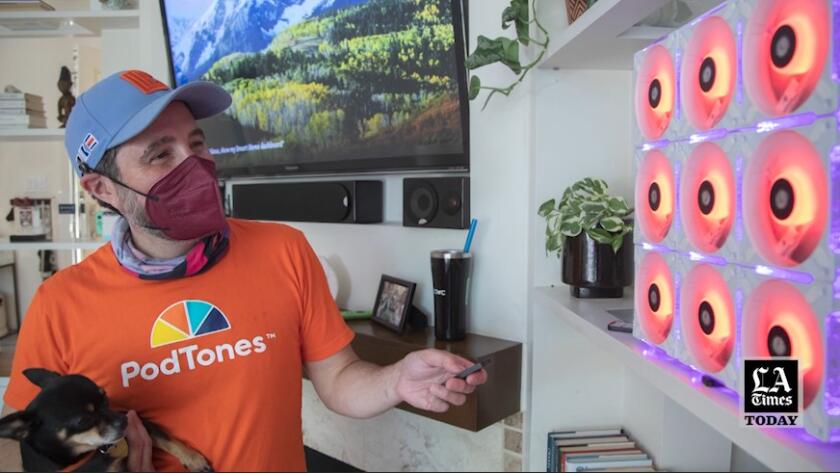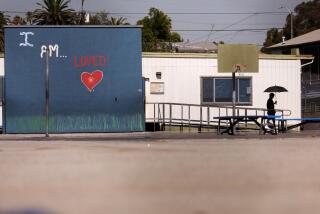The glowing box, pulsing with rainbowy light, looks as if it was dropped into this Studio City living room from a warehouse rave.
It came, in fact, from the garage where Alex LeVine has been tinkering with fans, filters and tape, trying to bring a bit of fun to a simple tool to prevent the spread of COVID-19. The mesmerizing device uses fans and filters to pull contaminants — including smoke, dog dander and the unwelcome coronavirus — out of indoor air.
It can also flash in time to the sounds of Phil Collins. “In the Air Tonight,” of course.
“People aren’t embracing any of the other things that can avert disaster in this pandemic,” said LeVine, a 49-year-old cannabis company executive with an electrical engineering degree who started building trippy do-it-yourself filtration boxes as a hobby. “Maybe I can create a way to clean the air that people want in the middle of the room.”
As the pandemic drags on, cleaning up indoor air has become a passion project not just for aerosol scientists and epidemiologists, but for a grab bag of concerned citizens like LeVine.
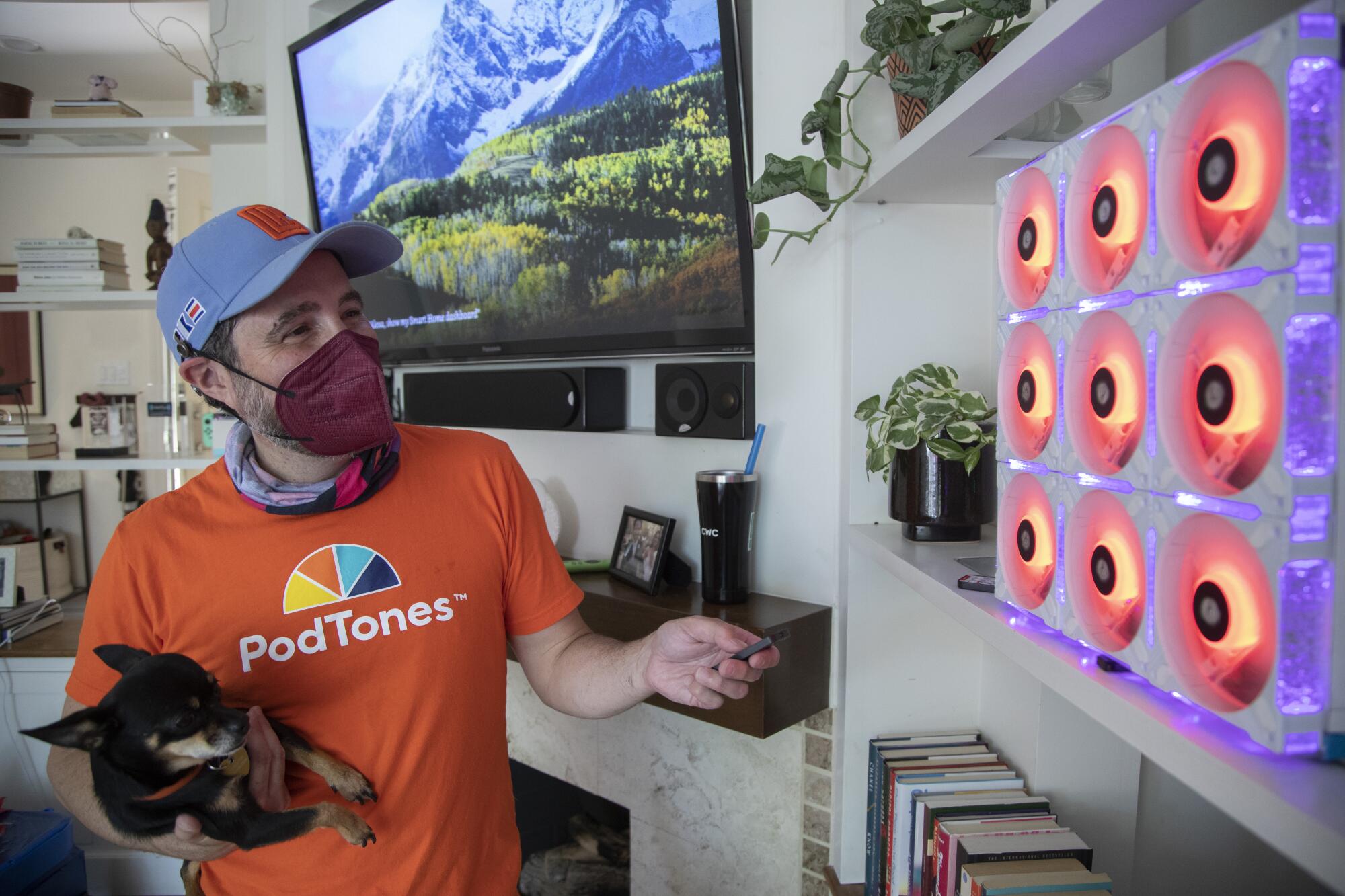
In San Francisco, parents mobilized to fund and build simple devices for classrooms. On Twitter, one woman consulted experts about how many she should assemble for an indoor wedding in Ontario. University volunteers have gathered to build them in San Diego, Arizona and Connecticut.
It has been rewarding “to be able to feel like you’re being proactive and that you’re rolling up your sleeves against the virus — that you’re not just passive, but you’re actually able to trap it in a filter and to go after it,” said Marina A. Creed, a neuro-immunology nurse practitioner at UConn Health who began looking into air filtration when her immunocompromised patients worried that their kids might bring home COVID-19 from school.
Students and faculty from the University of Connecticut’s schools of nursing, engineering and other fields have since assembled hundreds of the DIY cleaners with box fans, filters and duct tape for local schools. “People are hungry for something else that they can do to fight back,” Creed said.
As the BA.5 subvariant barrels through the country and many people have abandoned masks, engineers and epidemiologists have argued that more needs to be done to prevent the coronavirus from building up in stagnant air. Cleaning up indoor air has long been a neglected front in the halting battle against COVID-19, experts say.
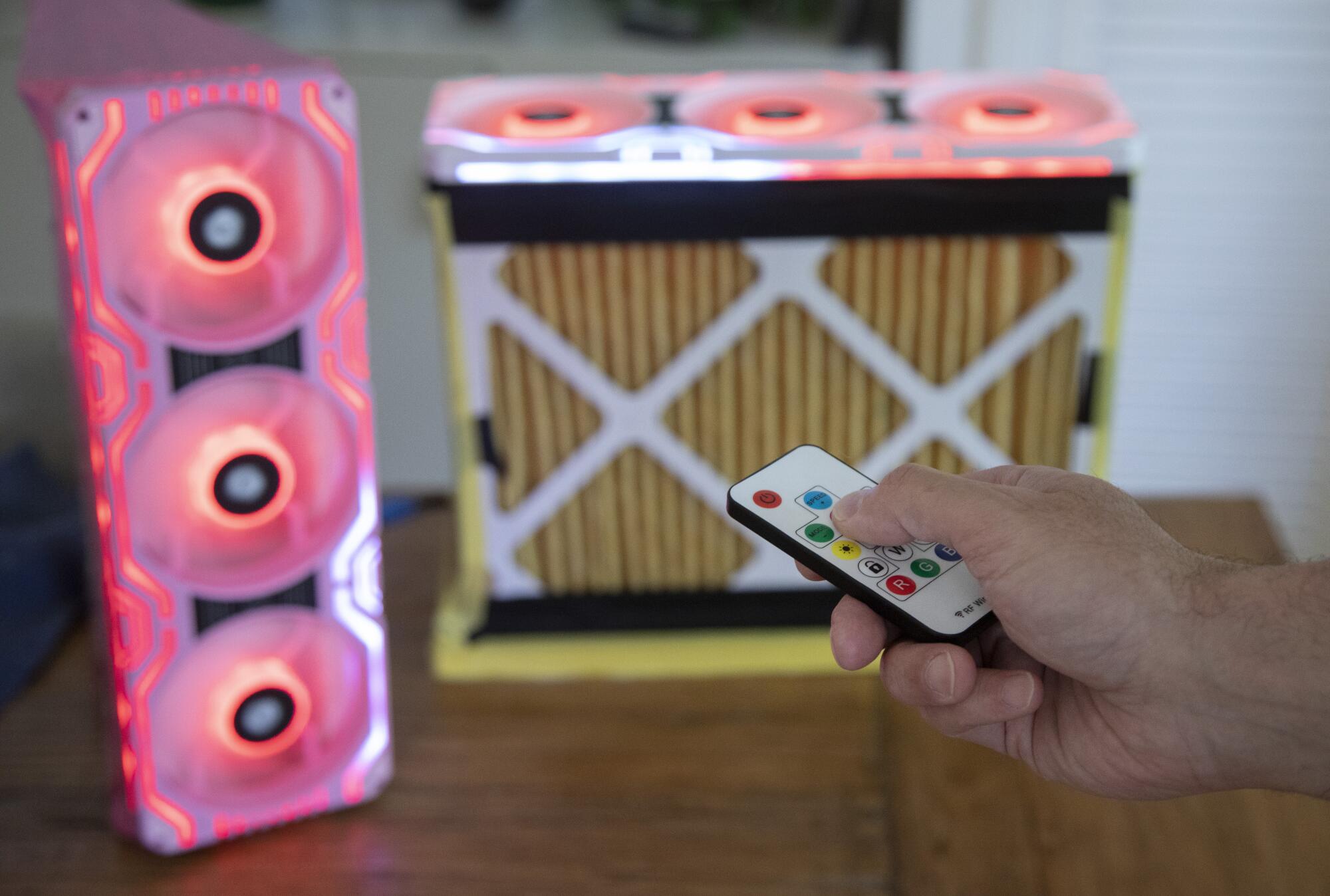
“It’s enormously important for our health. It’s enormously important for protection against many infectious diseases. And it is completely neglected in almost every aspect” — and had been long before the pandemic, said Jeffrey Siegel, a professor of civil engineering at the University of Toronto
Changing the air in an indoor space just five times an hour — a lower rate than the systems used for some hospital wards — can cut the risk of COVID transmission in half, researchers have found. In Italy, one analysis found that ventilation systems could reduce the risk of coronavirus infection in schools by more than 80% if the air was changed six times an hour.
Improving ventilation and air filtration may not stop someone from getting infected if they sit maskless next to a contagious person, but it could make “super-spreading events” that infect huge numbers of people less likely, said Dr. Abraar Karan, a fellow in the Division of Infectious Diseases and Geographic Medicine at Stanford University. He is also studying how such devices could reduce the spread within households.
“We’re not going to eliminate COVID” by cleaning indoor air, Karan said, “but we can eliminate these big surges of infection.”
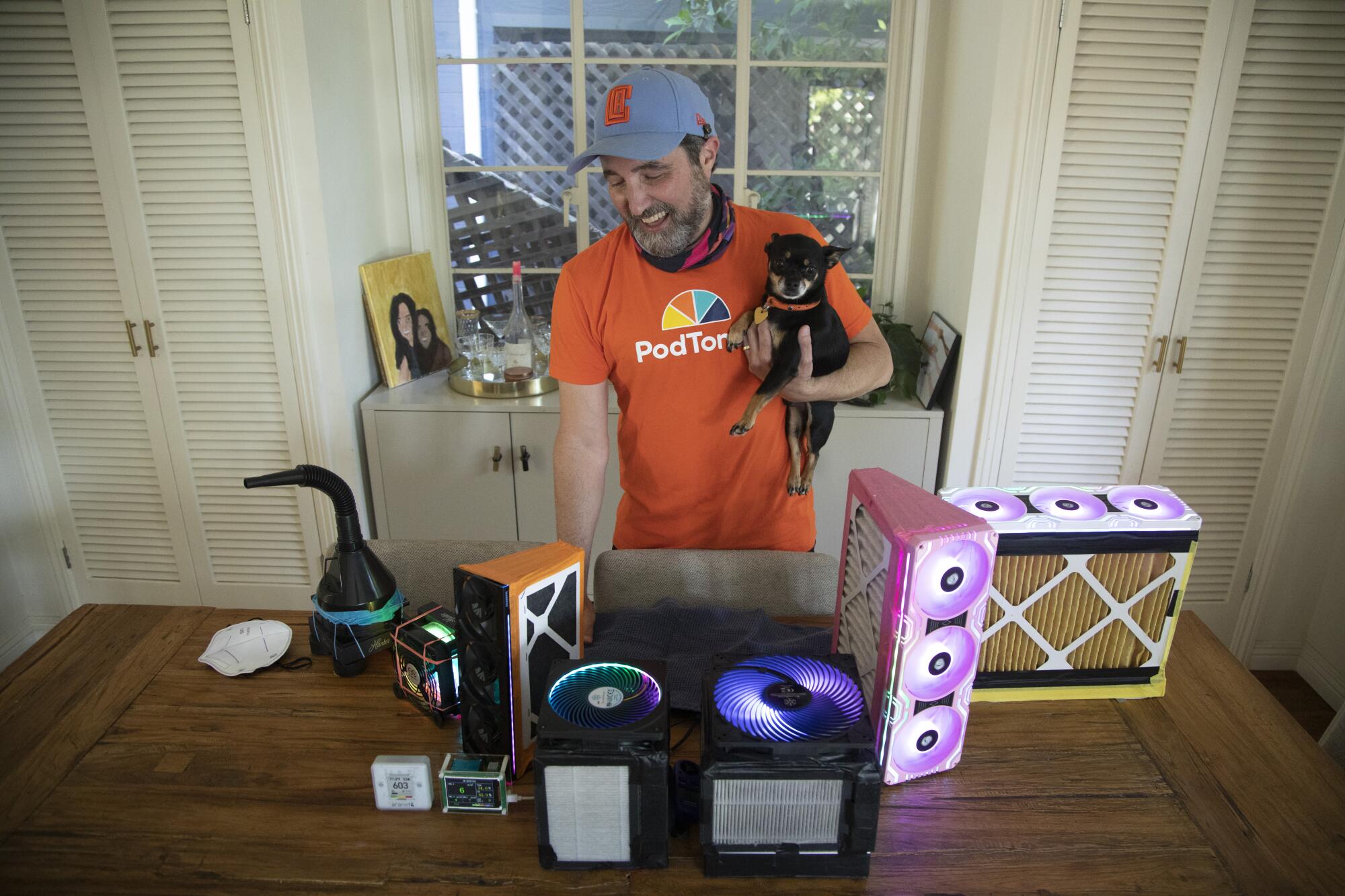
The problem is that indoor air is “very hard to regulate,” Siegel said. Building codes are typically used when a structure is first built or undergoes major renovations, he said, and then “it’s never looked at again unless something stops working.”
Federal officials pointed out that the Environmental Protection Agency has no regulatory power over the quality of indoor air. “Right now, two tools we have are guidance and funding,” said Georgia Lagoudas, a senior advisor for biotechnology and bioeconomy in the White House Office of Science and Technology Policy. “We’re doing what we can to incentivize people.”
Schools, for instance, can tap federal relief funds to improve ventilation systems or buy portable cleaners. The EPA offers tips on what to look for when buying a portable device or filter.
And federal officials released a “Clean Air in Buildings Challenge” this spring that provides recommendations on improving indoor air, from simple steps such as opening windows to sophisticated systems that use ultraviolet energy to kill the virus.
But federal agencies have not put forward a clear standard for what it takes to clean an indoor space, said Devabhaktuni Srikrishna, an infectious-diseases control researcher and founder of PatientKnowHow.com, which provides consumer advice on protective tools such as respirators.
In March, aerosol scientists were heartened when the White House held a virtual event focused on cleaning indoor air to quash the virus, but Devabhaktuni complained that it had made no firm recommendation for how many times air should be changed per hour. He likened it to getting the right pressure in vehicle tires.
“It’s one thing to say, ‘Inflate your tires.’ It’s another to say, ‘Set your tire pressure to 30 psi,’” he said.
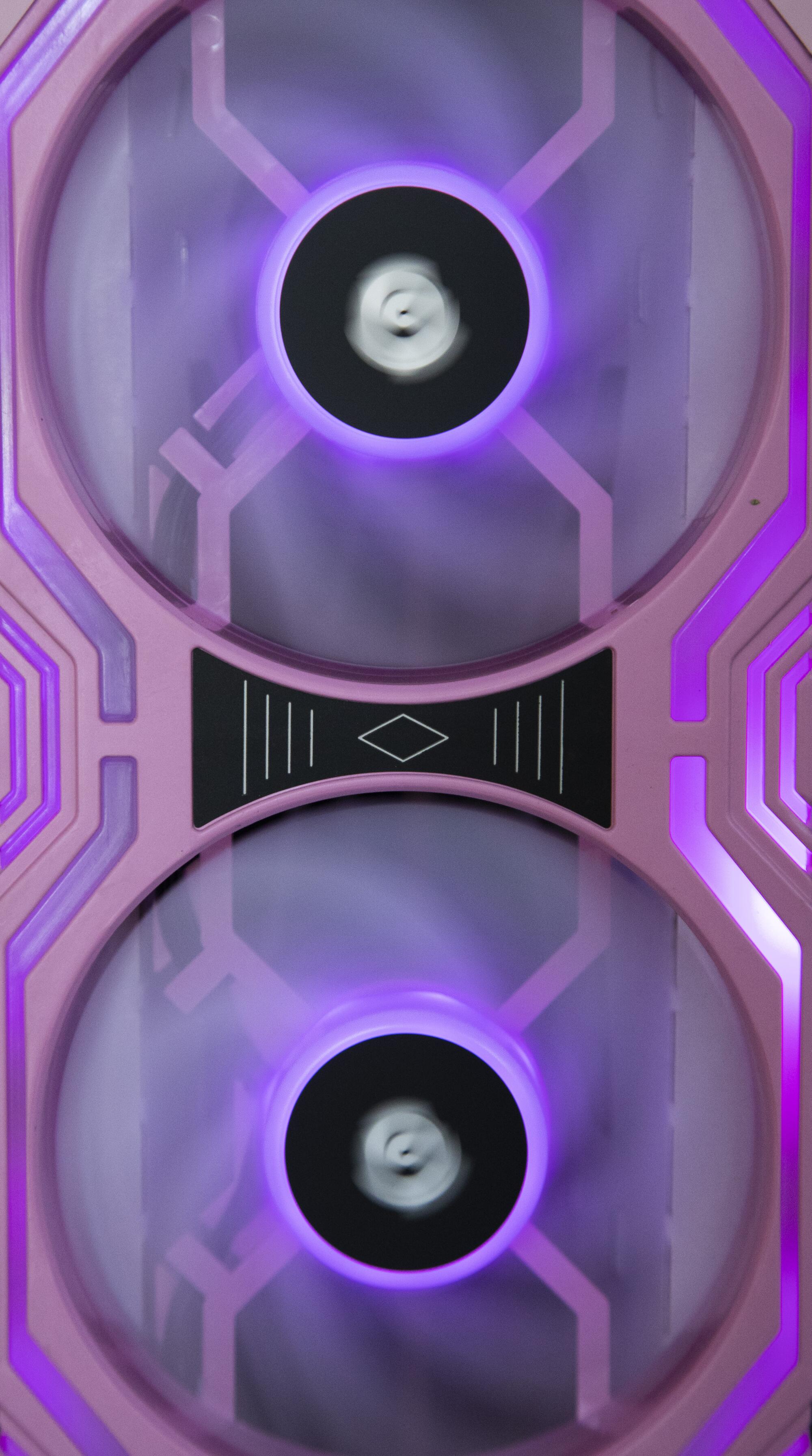
A national standard for indoor air — even a totally voluntary one — would let building operators know what they should aspire to, said William Bahnfleth, a professor of architectural engineering at Penn State University and chair of an epidemic task force at the American Society of Heating, Refrigerating and Air-Conditioning Engineers. It could also give rise to evaluation and public labeling of buildings for their air quality, like the letter grades assigned by health departments to restaurants, he said.
The tricky part of setting any such standard, however, is that “we don’t necessarily have a common understanding of what acceptable risk is,” Bahnfleth said.
Some other tools to combat the pandemic, such as N95 masks and rapid tests, have become easier to access over time, with free tests now being shipped through the U.S. Postal Service and some pharmacies tasked with handing out N95 respirators without charge.
Matthew Cortland, a senior fellow on healthcare and disability at the left-leaning think tank Data for Progress, argued that to quash the pandemic, “you need an investment of money to purchase HEPA filters or [do-it-yourself air cleaners] and deploy them on a widespread scale.”
“We’ve just seen nothing of the sort in the United States,” Cortland said. Federal money has been made available to schools, “but schools are using that money for capital projects that will take years to be realized — when children are getting sick today,” they said.
Epidemiologist Megan Jehn, an associate professor at Arizona State University, said that public health officials “really dropped the ball” by putting so much emphasis, early in the pandemic, on the idea that COVID could spread through surfaces. Although the federal Centers for Disease Control and Prevention later clarified that the risk of getting COVID from contaminated surfaces is “generally considered to be low,” schools and other public settings have continued to focus on disinfecting and washing surfaces, Jehn lamented.
“There’s really not as much awareness that, one, COVID can be airborne and, two, that we can clean the air,” Jehn said.
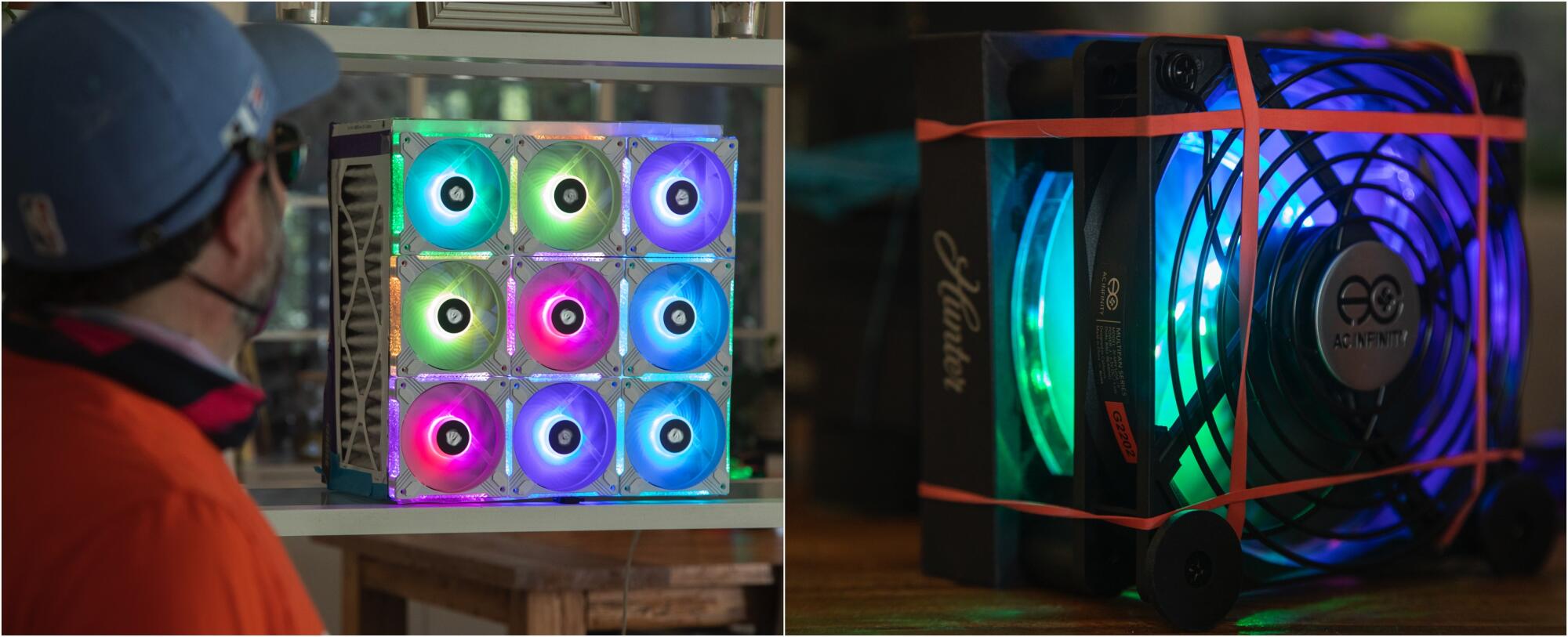
Unlike simple recommendations about masks, “there is not one specific solution that works for all indoor settings,” said Erica Kimmerling, senior policy advisor for public engagement in science at the White House Office of Science and Technology Policy.
For instance, not all HVAC systems work with high-grade filters, Kimmerling explained. DIY air cleaners may be a great tool in some cases, but if building operators can afford longer-term upgrades, that may be a better choice, she said.
“We want to give people that menu of options that work — and then figure out what works best in their environment,” Kimmerling said.
In Los Angeles County, health officials distributed HEPA air purifiers to more than 100 homeless shelters and other interim housing sites, according to a county report.
The L.A. County Department of Public Health said it has connected schools with state grants to improve their ventilation systems and provides diagrams on the best places to put fans in school gyms. If outbreaks arise at schools or workplaces, its teams help assess ventilation systems and may perform a “smoke test” to gauge airflow, according to the public health department.
Los Angeles Unified officials said they had upgraded the filters in their school ventilation systems and were checking and changing them more frequently. The district also purchased more than 1,700 portable cleaners as a backup option if air-conditioning systems go down in classrooms, said its chief facilities executive, Mark Hovatter.
“We’re providing the best air quality we can for our classrooms,” Hovatter said.
LAUSD officials were unable to promptly confirm how many air changes their classrooms were getting per hour, however. Thousands of people have sent letters to the district urging it to ensure safe air not just with the HVAC system, but with HEPA and DIY filtration devices to achieve a dozen air changes per hour.
As the school district has dropped masks and stopped routine weekly testing, “they’re not upgrading air quality to meet the need,” said Rebecca Schenker, a parent and community advocate with the group LAUSD Parents for COVID-Safe Schools.
“It’s enormously important for our health. It’s enormously important for protection against many infectious diseases.
— Jeffrey Siegel, a University of Toronto civil engineering professor.
Many other districts have not taken the same steps as LAUSD: As of earlier this year, less than 40% of public schools surveyed nationally said they had replaced or upgraded their HVAC systems, according to a study released by the CDC.
Fewer — less than a third — had put portable HEPA filtration systems in classrooms. And although many schools did spend on air improvements, a Kaiser Health News investigation found that some were installing devices that experts warned were unproven and could even be harmful.
“There are things we could be doing immediately and not waiting to spend millions of dollars to retrofit ventilation systems,” said Richard L. Corsi, dean of the UC Davis College of Engineering.
His name has become synonymous with grass-roots efforts to clean up indoor air, thanks to a do-it-yourself cube called the Corsi-Rosenthal box, which he helped develop from box fans, four high-quality filters and duct tape. He estimated that when materials, replacement filters, and electricity are included, it costs “a little less than a venti cafe mocha at Starbucks, per student, per year.”
Creed, whose efforts to make Corsi-Rosenthal boxes in Connecticut were supported by a local foundation and some programs at the University of Connecticut, estimated that the boxes had cost them roughly $65 apiece. And “the amazing thing is that it actually works,” added Kristina Wagstrom, an associate professor in chemical and biomolecular engineering at UConn who has been involved with the effort. “It’s not just one of those DIY things that makes you feel better.”
In a published analysis, Corsi and other UC Davis researchers found that the simple devices had “exceptional performance relative to most commercially available filter-based air cleaners.” Devabhaktuni also found that they compared well to HEPA purifiers at a fraction of the cost. The California Department of Public Health mentions them on its website as an inexpensive option.
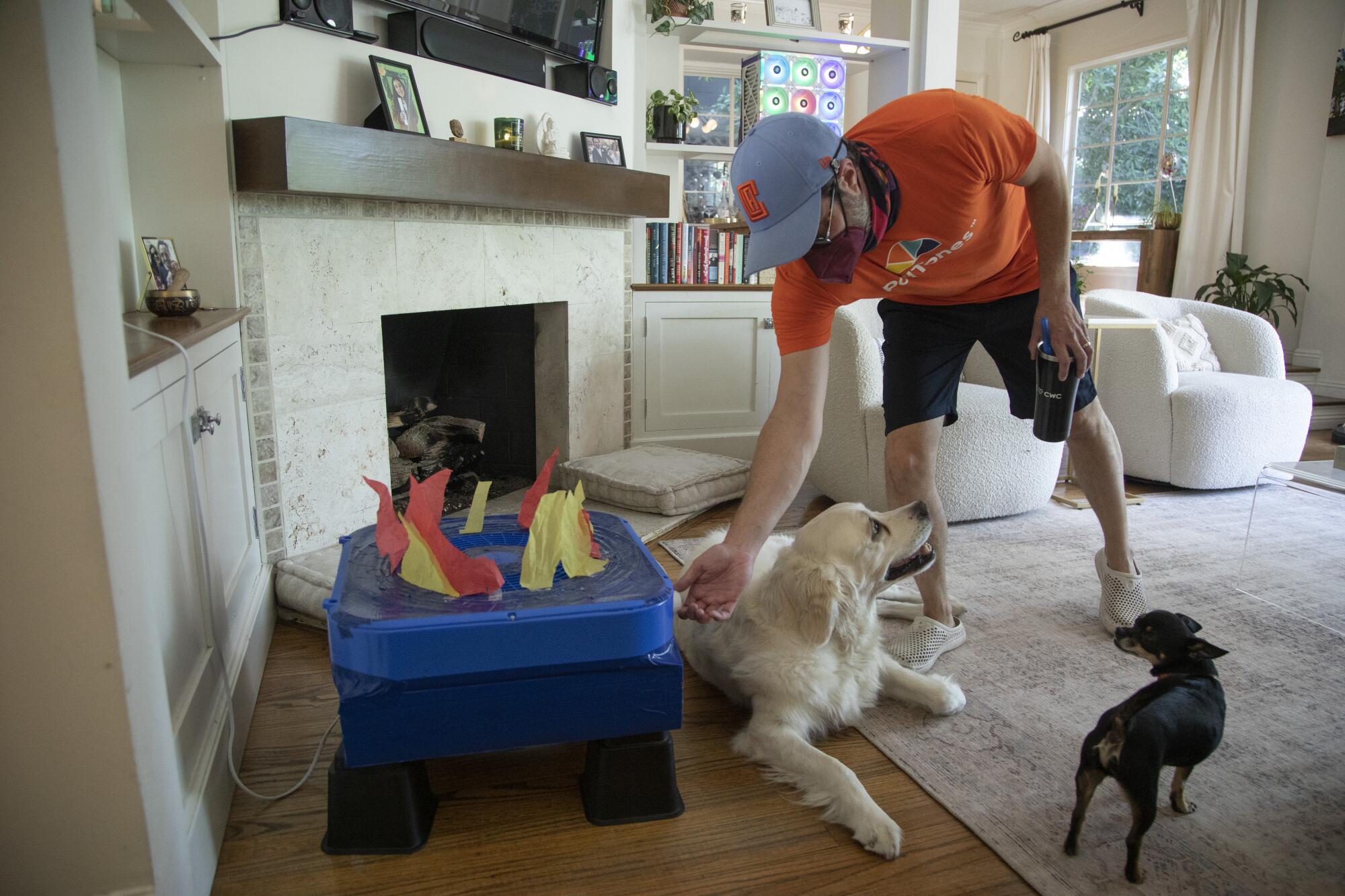
In Studio City, LeVine spotted the homemade devices on social media, watched a training video made by a fourth-grader and got to work. Inspired by gamers who have tricked out their computers with LED lights, he began experimenting with cheap, illuminated fans made for computers and sharing his colorful creations online.
Among his fanciful works is a blue box of a filtration device, garnished with strips of red and yellow tissue paper that wave in the fanned air like flames, which has been stationed in his living room. LeVine said he was pleased to discover that his daughter, who is mildly allergic to one of their dogs, was no longer bothered by them after the filter had been running.
Homemade cleaners also sit in his office, bedroom, garage and guest room, but so far, LeVine hasn’t distributed them to anyone else. For now, he said, “my goal is to inspire other people.”
When cholera ravaged Europe and North America in the 19th century, people “revolutionized sewage” by creating the modern sewage system, said Andrew Noymer, an associate professor of population health and disease prevention at UC Irvine. “They could have just said, ‘Boil your water.’ But they didn’t do that. They gave people clean drinking water.”
Ensuring clean air indoors is “the 21st century equivalent,” Noymer said. But “it’s a long-term solution, and people are still hoping that COVID is just going to go away.”
Watch L.A. Times Today at 7 p.m. on Spectrum News 1 on Channel 1 or live stream on the Spectrum News App. Palos Verdes Peninsula and Orange County viewers can watch on Cox Systems on channel 99.
More to Read
Sign up for Essential California
The most important California stories and recommendations in your inbox every morning.
You may occasionally receive promotional content from the Los Angeles Times.
